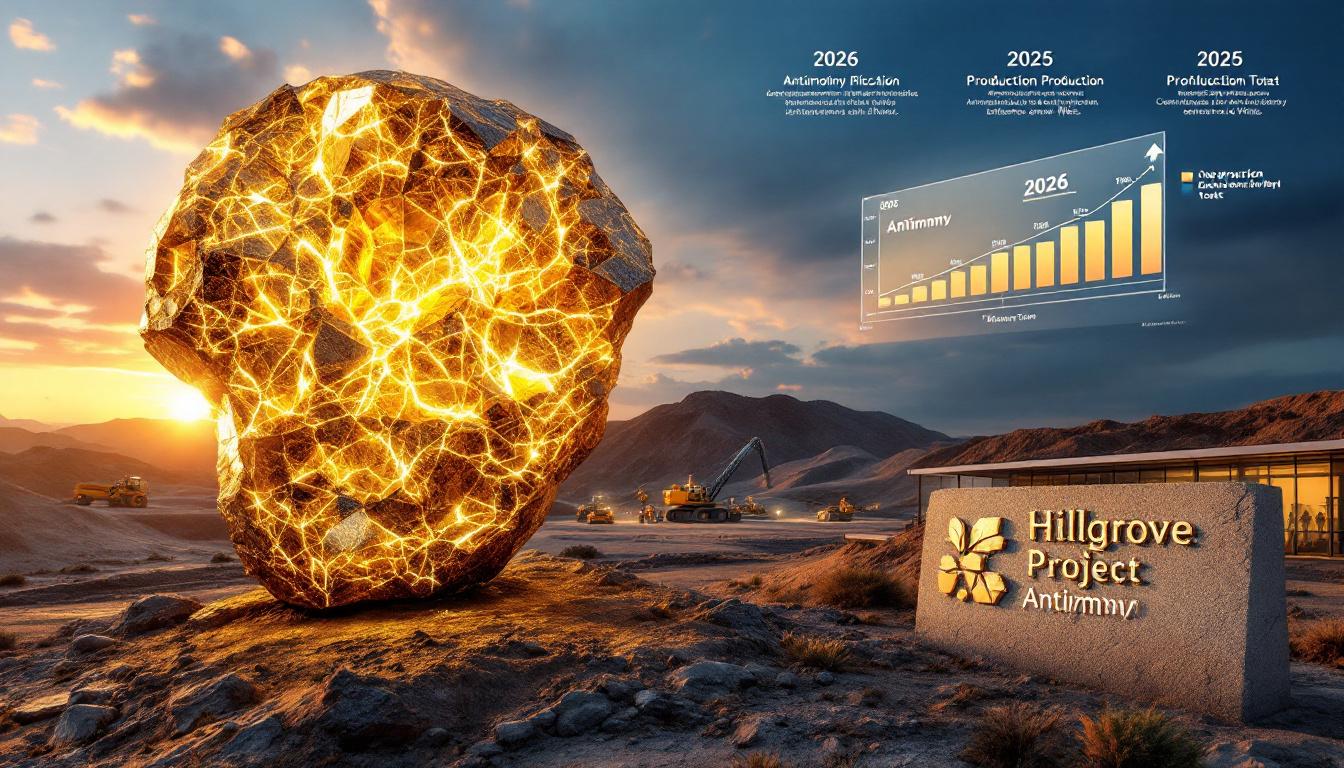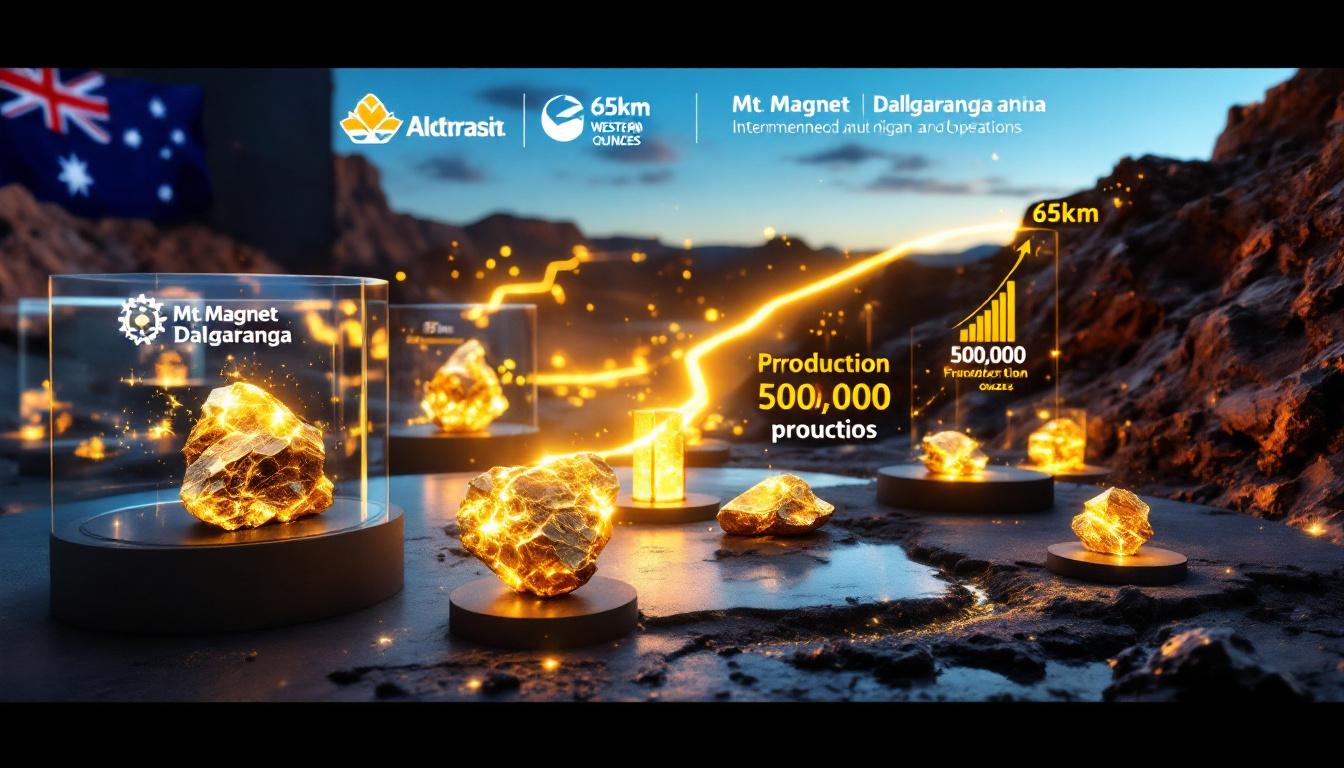What Is Driving Peru's Copper Production Decline?
Peru, once a global copper powerhouse, has experienced its first production decline in five years and slipped to third place in global copper production rankings. This concerning trend comes despite the country's vast copper ore reserves and highlights significant challenges facing the mining sector.
The Current State of Peruvian Copper Production
According to data from the National Society of Mining, Petroleum and Energy (SNMPE), 2024 marked a significant turning point for Peru's copper industry, with production falling for the first time since 2019. This setback has caused Peru to lose its position as the world's second-largest copper producer, falling behind both Chile and the Democratic Republic of Congo.
"The numbers are concerning, especially considering Peru's vast untapped potential," notes Julia Torreblanca, president of SNMPE. "While we expect a modest recovery in 2025, the growth rate will be relatively small compared to what we've seen in previous years."
Industry analysts project that Peru could potentially reach 3.4 million metric tons of copper production by 2030, but this ambitious target faces numerous obstacles that must be addressed promptly.
Key Factors Behind Peru's Production Challenges
The SNMPE has identified several critical factors hampering Peru's copper sector:
-
Informal mining expansion: Unauthorized mining operations have increasingly encroached on formal mining concessions, creating security issues and disrupting planned operations.
-
Administrative hurdles: The permitting process for new projects and expansions involves multiple government agencies and extensive paperwork, often resulting in significant delays.
-
Property rights conflicts: Disputes between legitimate concession holders and informal operators have created legal uncertainties that deter investment.
-
Criminal activity: There has been a documented increase in criminal groups entering the mining sector through informal operations.
As Torreblanca emphasizes, "The biggest concern for investors is the increase in informal activities, which not only threatens current operations but also jeopardizes future development plans."
How Is Informal Mining Threatening Peru's Copper Sector?
The expansion of informal mining represents the most significant threat to Peru's copper industry. This growing challenge has profound implications for both current operations and future investment prospects.
The Scale of the Informal Mining Problem
The SNMPE reports that more than 20 major mining companies operating in Peru have been affected by informal mining activities. These unauthorized operations have encroached on legally granted concessions, creating significant security and operational challenges.
"The biggest threat to Peru's efforts to further tap into its vast copper ore reserves is the growing number of informal and illegal mining activities," warns Torreblanca. "This trend has opened the door for criminal groups to enter the sector, further complicating an already difficult situation."
The stakes are extraordinarily high, with tens of billions of dollars in potential mining investments now at risk due to these challenges. The Peruvian government has acknowledged the problem of large-scale informal mining and copper investors in Peru, recognizing it as a critical issue that must be addressed to maintain the country's position in the global copper market.
Why Informal Mining Is Expanding
Several factors are driving the growth of unauthorized mining operations:
-
Economic incentives: With copper price insights indicating historically high values, there are strong financial motivations for unauthorized extraction.
-
Regulatory loopholes: The temporary registration process known as Reinfo has inadvertently provided cover for some illegal mining activities.
-
Socioeconomic pressures: In many mining regions, limited economic alternatives lead local communities to participate in informal mining.
-
Enforcement challenges: Limited government resources make it difficult to monitor and control mining activities in remote areas.
Industry experts note that the problem has been building for years but has accelerated as copper prices have risen and surging copper demand has increased due to the green energy transition and infrastructure development.
Which Major Companies Are Affected by Informal Mining?
The informal mining crisis has impacted numerous international mining corporations with significant operations or development projects in Peru, potentially jeopardizing billions in investments.
Major Mining Companies Facing Challenges
According to SNMPE data, more than 20 major mining companies have reported encroachment issues on their concessions. Among the most prominent affected corporations are:
-
Southern Copper Corporation: One of Peru's largest copper producers, with multiple operating mines and expansion projects.
-
MMG Ltd.: The operator of the Las Bambas mine, which has faced production interruptions due to various challenges including informal mining activities.
-
First Quantum Minerals Ltd.: Developer of significant copper projects that have experienced delays.
-
Teck Resources Ltd.: Operating in Peru with concerns about property rights and security.
These companies represent just a fraction of the affected operations, with the impact extending to both producing mines and development-stage projects across the country.
Investment Implications
The uncertainty surrounding concession rights has had several measurable effects on investment decisions:
-
Project timeline extensions: Several major expansion projects have seen their timelines extended as companies reassess risks.
-
Capital reallocation: Some companies are redirecting investment capital to operations in more stable jurisdictions.
-
Increased security costs: Mining companies are spending additional resources on security measures to protect their concessions.
-
Cautious approach to new acquisitions: There has been a noticeable slowdown in new concession applications and project acquisitions.
Industry analysts note that while these companies remain committed to Peru in the long term, the current challenges are forcing them to adopt more conservative copper investment strategies in the short to medium term.
What Is the Reinfo System and Why Is It Controversial?
Peru's temporary registration process for small-scale miners, known as Reinfo, has become a focal point of controversy in the mining sector.
Understanding the Reinfo System
The Reinfo system was initially established as a pathway to formalization for small-scale and artisanal miners. It allows these operators to continue mining activities while working toward full compliance with regulatory requirements. Key aspects of the system include:
-
Temporary nature: The Reinfo registration is not permanent and is set to expire at the end of 2025.
-
Formalization objective: The stated purpose is to bring informal miners into the regulated economy.
-
Operational permissions: Registered miners can legally conduct operations during the formalization process.
-
Limited oversight: Critics argue that monitoring of compliance with environmental and safety standards remains inadequate.
According to the SNMPE, while the intentions behind the Reinfo system may have been positive, its implementation has created significant problems for the formal mining sector.
Industry Concerns About Reinfo
The formal mining industry has raised several specific concerns about how the Reinfo system operates in practice:
-
Cover for illegal activities: "The industry argues that these [Reinfo] licenses serve as a cover for illegal activities," notes the SNMPE report.
-
Property rights infringement: Reinfo registrations have been granted in areas where formal companies already hold valid mining concessions.
-
Environmental impact: Informal operations typically lack proper environmental controls, leading to pollution and habitat destruction.
-
Safety standards: Small-scale operations often fail to implement adequate safety measures, putting workers at risk.
-
Tax evasion: Many informal operators avoid paying the taxes and royalties that formal mining companies must pay.
The controversy has intensified as the expiration date approaches, with industry representatives advocating for stricter enforcement while others push for extensions to the program.
How Does Informal Mining Compare to Formal Copper Production?
While informal copper mining remains relatively small compared to formal production, its impact extends beyond pure production numbers.
Production Comparison
According to industry data, formal copper mining operations account for virtually all of Peru's officially recorded copper production. The SNMPE reports that informal copper production is currently "negligible" in volume compared to formal operations.
However, government officials have warned that this could change. "The Peruvian government has acknowledged large-scale informal copper mining and warned that high prices could lead to an increase," notes the SNMPE report. As copper price volatility remains a concern, there is worry that unauthorized extraction could grow significantly.
The formal sector benefits from:
- Modern extraction methods and processing facilities
- Economies of scale
- Access to international markets
- Technical expertise and equipment
Meanwhile, informal operations typically rely on:
- Labor-intensive methods
- Smaller-scale extraction
- Limited processing capabilities
- Local or black market sales channels
Beyond Production: Broader Impacts
The influence of informal mining extends far beyond its direct production contribution:
-
Security implications: Conflicts between formal and informal miners create security challenges in mining regions.
-
Environmental damage: Unregulated practices often lead to soil contamination, water pollution, and deforestation.
-
Social conflicts: Communities are often divided between those supporting formal mining development and those involved in informal operations.
-
Reputational risk: The association with informal mining activities can damage Peru's reputation as a mining investment destination.
-
Market distortions: Informal operators avoid taxes, royalties, and regulatory compliance costs, creating unfair competition.
Industry experts emphasize that these secondary effects may ultimately prove more costly than the direct production impacts, particularly if they lead to reduced formal sector investment.
What Is the Proposed MAPE Law and Its Potential Impact?
A legislative proposal on artisanal and small-scale mining (MAPE law) is currently under consideration in Peru's Congress, generating significant debate about its potential consequences.
Key Elements of the Proposed Legislation
The MAPE (Minería Artesanal y Pequeña Escala) law aims to create a comprehensive framework for regulating small-scale mining operations in Peru. While the full text remains under development, industry sources indicate that it addresses:
-
Classification criteria: Defining what constitutes artisanal and small-scale mining.
-
Formalization pathways: Processes for bringing informal operations into the regulated sector.
-
Operational requirements: Standards for environmental protection, safety, and tax compliance.
-
Enforcement mechanisms: Protocols for monitoring and ensuring compliance.
The proposed legislation has generated intense discussion among stakeholders, with formal mining companies expressing particular concern about certain provisions.
Industry Warnings About the MAPE Law
Mining industry representatives have raised serious concerns about the current draft of the MAPE law:
-
Legalization concerns: "Industry insiders warn that the current draft could legalize informal activities and undermine formalization efforts," according to the SNMPE report.
-
Property rights implications: There are fears that the law could weaken protections for existing concession holders.
-
Investment deterrent: Julia Torreblanca of SNMPE has called the proposal "a big problem" for investment confidence.
-
Regulatory overlap: The relationship between the proposed law and existing mining regulations remains unclear.
-
Implementation challenges: Questions remain about how the government would enforce new regulations given current capacity limitations.
The outcome of this legislative debate will likely have far-reaching implications for both the formal and informal mining sectors in Peru, potentially reshaping the country's copper industry for decades to come.
How Does Informal Gold Mining Compare to Copper?
While informal copper mining is a growing concern, Peru has already experienced the profound impact of informal gold mining, which offers insights into potential future challenges.
The Scale of Informal Gold Mining
Gold mining in Peru presents a stark warning about how significant informal mining can become:
-
Production volume: Approximately 40% of Peru's gold exports come from informal mines, according to SNMPE data.
-
Workforce size: Hundreds of thousands of small-scale miners operate in the gold sector without formal mining rights.
-
Geographic spread: Informal gold operations exist throughout the country, with particular concentration in the Amazon region.
-
Market integration: Despite their informal status, these operations have established supply chains that connect to global markets.
This extensive informal gold mining sector has developed over decades, creating entrenched economic and social structures that have proven difficult to reform.
Lessons from Gold for the Copper Sector
The experience with gold mining offers several important insights for understanding the potential trajectory of informal copper mining:
-
Scaling potential: The gold sector demonstrates that informal mining can reach industrial scales if left unchecked.
-
Enforcement challenges: Once established at a large scale, informal operations become increasingly difficult to regulate or formalize.
-
Environmental legacy: Informal gold mining has created severe environmental problems, particularly through mercury contamination.
-
Social complexity: Communities have become economically dependent on informal mining, complicating reform efforts.
-
Market dynamics: High commodity prices can rapidly accelerate the growth of informal operations.
Industry experts warn that without decisive action, informal copper mining could follow a similar trajectory, particularly as global copper supply forecast indicates continued strong demand due to electrification and renewable energy transitions.
What Solutions Could Address Peru's Informal Mining Crisis?
Addressing the informal mining challenge requires a multi-faceted approach that balances economic development, property rights, and environmental protection.
Potential Regulatory Approaches
Based on industry discussions and government consultations, several regulatory strategies have emerged as potential solutions:
-
Reinfo reform: Modifying the temporary registration system to address its vulnerabilities while preserving legitimate pathways to formalization.
-
Enhanced enforcement: Strengthening government capacity to identify and shut down truly illegal operations, particularly those encroaching on formal concessions.
-
Simplified formalization: Creating more accessible pathways for small-scale miners to achieve full regulatory compliance.
-
Administrative streamlining: Reducing bureaucratic hurdles for formal mining operations to make them more competitive.
-
Clear property rights: Strengthening legal protections for concession holders while providing alternative opportunities for small-scale miners.
The SNMPE has emphasized that any solution must respect legally granted mining rights while acknowledging the socioeconomic realities that drive informal mining.
Industry-Led Initiatives
Mining companies and industry associations are also developing their own approaches to address the challenge:
-
Community partnerships: Establishing collaborative relationships with local communities to reduce incentives for informal mining.
-
Technical assistance: Providing training and support to help small-scale miners meet formalization requirements.
-
Security coordination: Working with authorities to protect concession boundaries and prevent encroachment.
-
Local economic development: Investing in alternative livelihoods to reduce economic dependence on informal mining.
-
Monitoring technologies: Implementing satellite monitoring and other technologies to track activities on concessions.
Industry leaders emphasize that successful solutions will require cooperation between government, formal mining companies, communities, and those currently engaged in informal mining activities.
What Is the Outlook for Peru's Copper Sector?
Despite current challenges, Peru maintains significant potential as a copper producer, though realizing this potential depends on effectively addressing the informal mining issue.
Production Forecasts
Industry analysts project the following trajectory for Peru's copper sector:
-
Short-term recovery: A modest production increase is expected in 2025, following the 2024 decline.
-
Medium-term potential: If current challenges can be addressed, significant growth is possible by mid-decade.
-
Long-term target: The industry projects potential production of 3.4 million metric tons annually by 2030.
-
Contingent factors: These forecasts depend heavily on resolving informal mining and copper investors in Peru issues and streamlining administrative procedures.
The SNMPE emphasizes that these projections represent potential rather than guaranteed outcomes, with actual results depending on policy decisions and market conditions.
Investment Considerations
For investors considering Peru's copper sector, several factors will be crucial to monitor:
-
Regulatory developments: The outcome of the MAPE law debate and potential Reinfo reforms will significantly impact investment decisions.
-
Government enforcement: The willingness and capacity of authorities to protect legitimate mining rights will influence confidence.
-
Community relations: The social license to operate remains crucial for project development.
-
Global copper demand: Continued strong demand driven by electrification and renewable energy will influence development timelines.
-
Price stability: Sustained copper prices above production costs will be necessary to justify major capital investments.
Industry experts note that Peru's geological potential remains extraordinary, with some of the world's highest-grade copper deposits still awaiting development. The key question is whether the business environment will allow this potential to be realized.
FAQ: Peru's Copper Industry and Informal Mining
What percentage of Peru's copper comes from informal mining?
Currently, informal copper production remains negligible compared to formal production volumes. However, government officials have warned that high copper prices could drive growth in unauthorized mining activities, following patterns seen in the gold sector where informal mining represents approximately 40% of production.
How many mining companies are affected by informal mining in Peru?
More than 20 major mining companies operating in Peru have been impacted by informal mining activities, including international corporations like Southern Copper Corp., MMG Ltd., First Quantum Minerals Ltd., and Teck Resources Ltd. The effects range from encroachment on concessions to security concerns and operational disruptions.
When will the Reinfo system expire?
The temporary registration process known as Reinfo, which allows small-scale miners to operate while pursuing formalization, is scheduled to expire at the end of 2025. However, there is ongoing debate about whether the system should be extended, reformed, or allowed to lapse entirely.
What is Peru's projected copper production by 2030?
According to industry projections, Peru has the potential to reach 3.4 million metric tons of copper production annually by the end of this decade. However, this depends on successfully addressing challenges like informal mining and streamlining administrative procedures for formal operations.
What is the MAPE law being
Ready to Gain Immediate Insights Into Major Mineral Discoveries?
Stay ahead of the market with Discovery Alert's proprietary Discovery IQ model, which provides real-time notifications of significant ASX mineral discoveries and investment opportunities. Visit our discoveries page to understand why major mineral discoveries can lead to exceptional returns and begin your 30-day free trial today.




